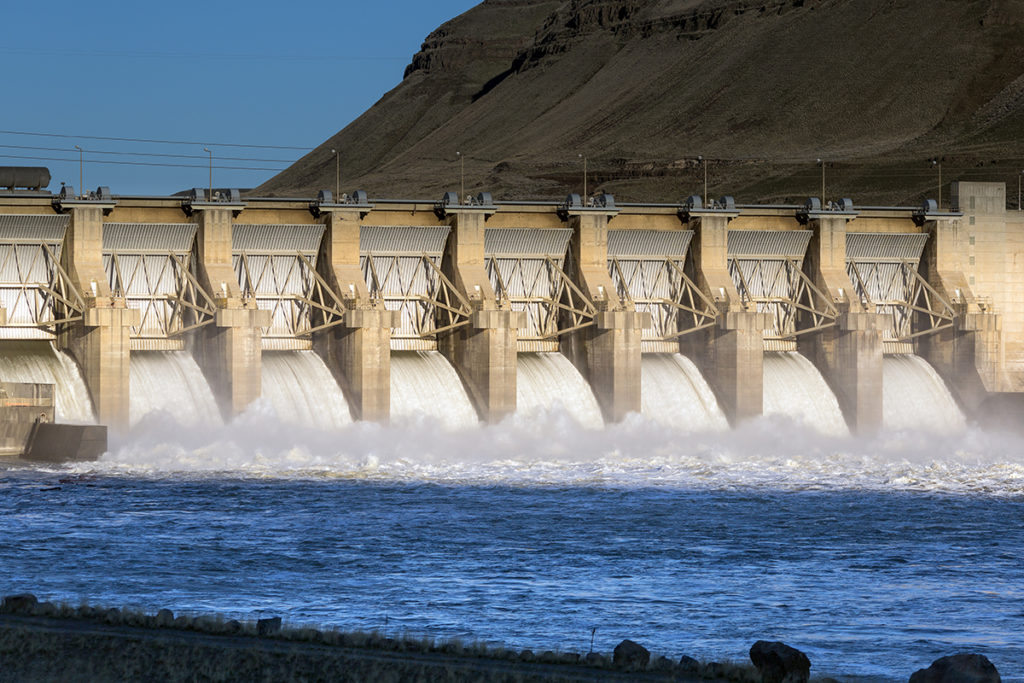
President Trump’s 2021 budget proposal would sell off transmission assets that provide affordable hydropower from federal dams to hundreds of electric cooperatives, eliminate the Low-Income Home Energy Assistance Program, and slash funding for energy research and development.
In more positive news for co-ops, the president’s budget would maintain the current $5.5 billion level for the Rural Utilities Service Electric Loan Program. However, it would cut $305 million from the U.S. Department of Agriculture’s Broadband ReConnect Program. It would set ReConnect funding at $250 million, down from the $555 million that Congress provided in the 2020 fiscal year.
The budget plan would eliminate funding for all USDA Rural Business and Cooperative programs, including the Rural Economic Development Loan and Grant Program, Rural Energy for America Program and the Rural Cooperative Development Grant Program. Co-ops use these programs to help fund rural development and renewable energy projects.
The international affairs budget would be cut by 22% from last year’s appropriated level, including the elimination of U.S. Agency for International Development’s economic and development assistance programs. The programs fund some of NRECA International’s efforts to bring electricity to developing nations.
The president’s budget is largely a wish list from the administration, giving insight into its priorities. Congress, which has the power of the purse, is responsible for funding the government and typically sets its own spending priorities.
“Underinvestment in rural communities, especially in infrastructure, continues to be a challenge,” said Louis Finkel, NRECA’s senior vice president of government relations. “Though the budget proposal provides some thoughtful support that would benefit the communities served by electric cooperatives, it also includes some troubling provisions. With a rapidly evolving energy market, it is concerning that the budget under-invests in energy technology development.”
The budget includes two new infrastructure programs: a $25 billion Revitalizing Rural America grant program to help bring transportation, broadband, water and other projects to rural communities, and a $60 billion building infrastructure grant program to finance large-scale projects in a range of sectors, including roads, bridges, rail, transit, pipelines, energy and broadband. The proposal doesn’t provide details about how these programs would be carried out.
Deep cuts are proposed for the Department of Energy’s core energy research and development programs, including the applied R&D programs focused on nuclear, fossil fuels, renewables, efficiency and electricity. However, the budget proposes $190 million for a new energy storage initiative focusing on the development, commercialization and utilization of storage technologies.
The president’s budget also would slash funding for the Federal Emergency Management Agency Disaster Relief Fund, bringing it down to $5.1 billion from $12.3 billion last year. Co-ops often accept FEMA grants to restore power after natural disasters.
Congress is likely to reject many of the administration’s proposed cuts. Lawmakers are especially fond of the LIHEAP program, which helps low-income co-op members with their heating and air-conditioning bills.
Lawmakers also have rejected, on a bipartisan basis, previous attempts by the Trump administration to privatize the transmission assets of the Power Marketing Administrations.
This is the fourth consecutive year the president has proposed to privatize the assets held by the Tennessee Valley Authority, Bonneville Power Administration, Southwestern Power Administration and Western Area Power Administration.
In a joint statement with the American Public Power Association, NRECA said it “will adamantly oppose any effort by the federal government to privatize TVA and PMA assets that have been paid for by electricity customers.”
The president’s budget proposal also would increase PMA rates by changing the cost-based rate structure to make it comparable to rates charged by investor-owned utilities.
“Raising electricity prices on rural Americans to send more money to Washington has been a bad idea each and every time it has been proposed,” said NRECA CEO Jim Matheson.
Trump’s budget proposal declares that “it is long past time for the Federal Government to divest infrastructure that can be more efficiently maintained by the private sector or local partnerships.” It also says that it would “mitigate risk to taxpayers.”
However, none of the PMA costs are borne by taxpayers, NRECA said in its statement with APPA.
Instead, PMA rates are set to cover all generation and transmission costs of the federal investment in the hydropower projects. Similarly, TVA provides affordable electric power to public power utilities and co-ops serving 10 million people in seven states at no cost to taxpayers, the associations said.
“Proposals like the ones included in this budget request are solutions in search of problems,” said APPA President and CEO Joy Ditto.
Erin Kelly is a staff writer at NRECA.